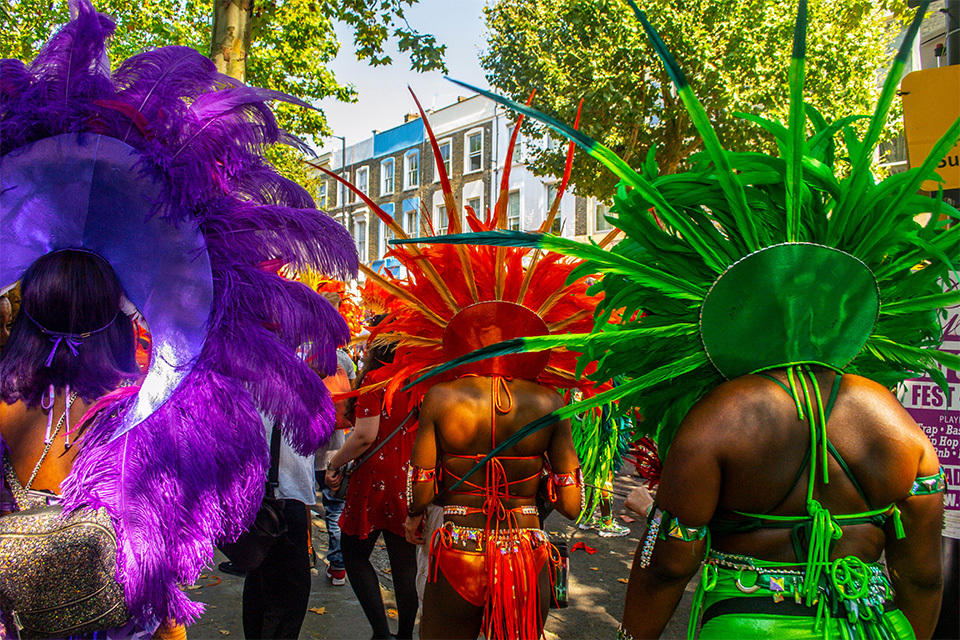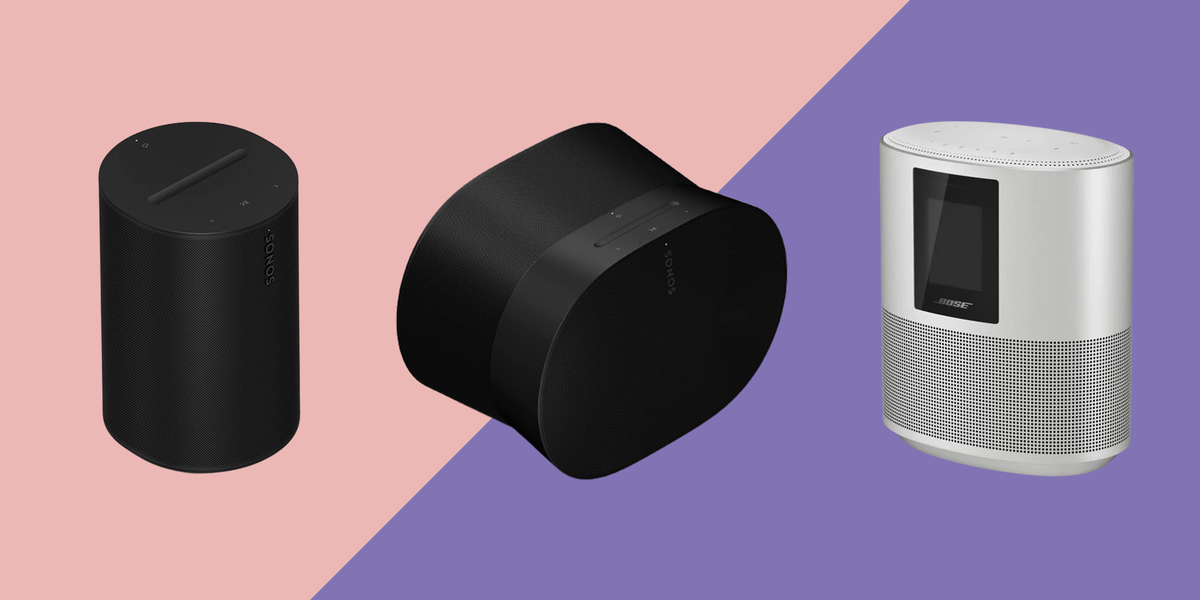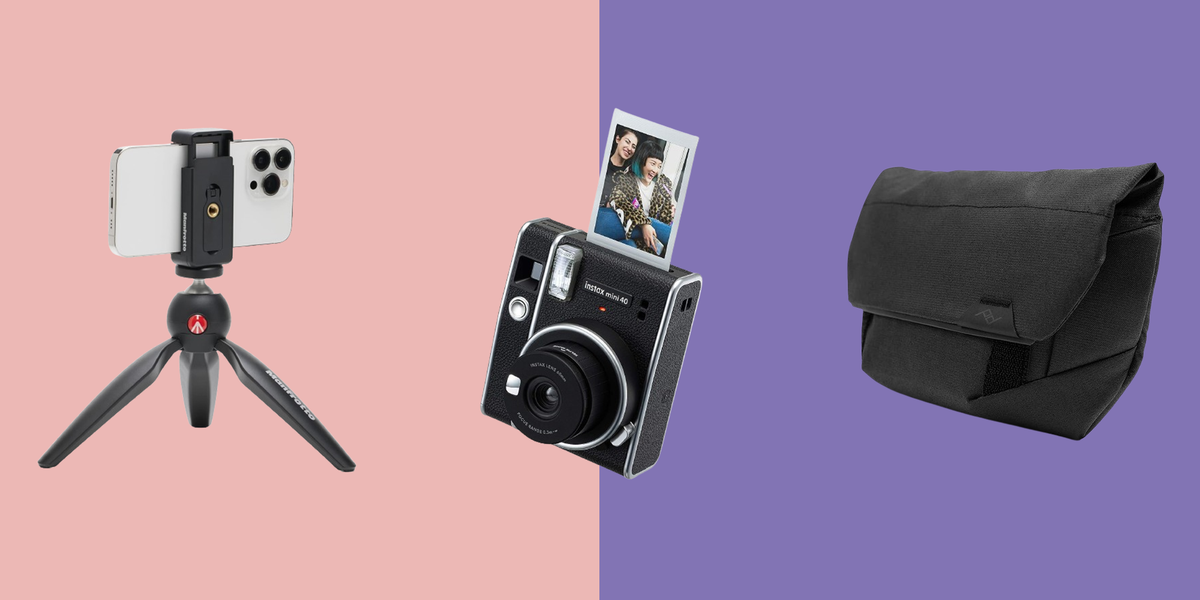We’re all spending more time than ever listening to music, and that’s before we even talk about all the brilliant podcasts and audiobooks we’re hooked on. And whether you’re listening while commuting, working out, travelling, or relaxing at home, the best headphones can completely transform your experience.
Good audio quality isn’t just about making music sound better – it can help you focus, stay motivated, and even make calls clearer. If your old pair of headphones is leaving you frustrated with tinny sound, weak bass, or constant outside noise creeping in, you’re probably overdue for an upgrade!
But with so many different types on the market – overear, inear, wired, wireless, noisecancelling, and more – how do you know which ones are right for you? That’s where this guide comes in.
We’ve rigorously tested and reviewed a massive range of headphones to help you find the best option for your needs, whether you’re after toptier sound, long battery life, or a budgetfriendly, everyday pair.
Overear headphones
The best overear headphones are the goto choice for anyone after both sound quality and comfort. You’re either going to be looking at a fully “overear” style with large ear cups that completely cover your ears or an “onear” option where the ear pads sit directly on the ears rather than surrounding them. The full overear ones are great for excellent passive noise isolation and, in many cases, active noise cancellation (ANC), making them ideal for home listening, office use or travel, where you’ll want to block out distractions.
These models tend to come with long battery life, often ranging from 20 to 60 hours on a single charge. Onear styles are great for a balance between portability and comfort, and because they don’t completely enclose your ears, they let in a bit more ambient noise than overear models.
Many overear headphones fold up for easier portability, and quite a few of our favourites come with carrying cases. While most of those we recommend are wireless models, we have some top picks with a wired connection further down in this guide.
Best overear headphones for most people
Sennheiser Accentum Plus
Now 35% Off
Best budget overear headphones

Best overear headphones for travel

Bose QuietComfort Headphones
Now 32% Off
Other overear headphones to consider
There are a huge number of headphones to consider – even if you’re just focused on wireless overear models, they go from affordable headphones at under £50, all the way up to premium cans that cost over £1,000.
We’ve tested loads of the best options and recommend looking at the flagship Bose model, the QuietComfort Ultra, if noise cancelling is your top priority. Apple fans will get on best with the AirPods Max, while the Dali IO8 are our top pick for audiophiles, and it’s worth looking at the Marshall Major V if you’re after a comfortable “onear” style.
Wireless earbuds
You’ve probably noticed that the best wireless earbuds have become some of the most widespread headphones for everyday use. Since the launch of the original AirPods in 2016, this category has skyrocketed in popularity. There are a huge number of options to choose from out there. The compact, cablefree design makes them perfect for commuting, working out or just throwing in your pocket when you’re on the go.
The vast majority of earbuds come with a charging case that extends battery life beyond their individual listening time. For instance, you might get around six hours of listening per charge, but they’ll top themselves up each time you put them in the case, which will store a few extra recharges in total.
Many wireless earbuds also feature water resistance, making them great for exercise. They tend to include touch or button controls, voice assistant support, and several customisable settings that you can access via companion smartphone apps.
Best wireless earbuds under £100

Nothing Ear (a)
Now 21% Off
Best budget wireless earbuds

Soundcore P20i
Now 17% Off
Best wireless earbuds for iPhone users

Best allaround wireless earbuds

Other wireless earbuds to consider
If you’re finding the enormous market for wireless earbuds intimidating, you’re not alone. We recommend picking buds that go with your main device, which is probably your phone. So, go with AirPods if you’ve got an iPhone, go with Pixel Buds if you have a Pixel, or with Galaxy Buds if you’ve got a Samsung handset.
Focused on sound quality? The best we’ve heard is with the highend Bowers & Wilkins Pi8, although it does come at a steep price. Bose still reigns supreme for noise cancelling with its QuietComfort Ultra earbuds, while the JBL Tour Pro 3 are the most featurepacked pair we’ve come across.
Noisecancelling headphones
Noisecancelling headphones use clever technology to reduce unwanted background sounds. Active noise cancellation (ANC) works by using builtin microphones to detect external noise and generate sound waves that cancel it out.
This is particularly effective for lowfrequency noises like airplane engines or air conditioning, but advanced models can now tackle higherfrequency sounds like people chatting in the office. You’ll find that the best noisecancelling headphones include both wireless overear and inear models.
Many models offer adaptive ANC, which automatically adjusts noise cancellation levels based on your environment. This means you get the best sound isolation whether you’re in a noisy coffee shop or a quiet library. These headphones should also include a transparency or ambient mode, which lets in outside noise when needed. This is great for situations where you need to stay aware of announcements or conversations without removing your headphones.
Best overear noisecancelling headphones

Bose QuietComfort Ultra Headphones
Now 22% Off
Best noisecancelling wireless earbuds

Bose QuietComfort Ultra Earbuds
Now 27% Off
Best value noisecancelling overear headphones

Soundcore Space One Pro
Now 13% Off
Other noisecancelling headphones to consider
There are a lot of powerful options for highquality noise cancelling, whether you’re on a tight budget or not. Some of the best earbuds we’ve heard for ANC under £150 are the Soundcore Liberty 4 Pro, while the pricier AirPods Pro 2 are excellent for Apple fans.
Just want the most features and prepared to spend to get them? The JBL Tour Pro 3 buds have exceptional noise cancelling to go with their extensive feature set. When it comes to overear options, there are a lot of brilliant models. Apple’s premium AirPods Max (£495) and the Dyson OnTrac (£450) are some of the most expensive options, but you’ll find great noise cancelling from the likes of the Bose QuietComfort Headphones and Sony WH1000XM5 if you’d prefer to spend under £300.
Headphones for exercise
When it comes to the best headphones for exercise, you want a pair that are comfortable, secure and sweatproof, with brilliant sound quality to keep you motivated as you work up a sweat. You might like the idea of wearing overear headphones in the gym, but we’d always recommend wireless, inear buds for exercise, as they stay in place far better and generally have superior sweatwicking properties.
Bone conduction headphones, which are designed to keep you safe as you hike, run or cycle, are also becoming increasingly popular with those who exercise outdoors. They send audio vibrations through your cheekbones to your inner ears, letting in the world around you and helping you stay aware of your surroundings. Similarly, open earbuds are worth considering if safety is your top priority. These headphones have all been tested by our fitness experts in the Good Housekeeping Institute lab.
Best wireless headphones for exercise


Sennheiser Sport True Wireless
Best headphones for runners


Shokz OpenRun Pro
Now 13% Off
Best budget headphones for exercise


JLab Go Air Tones
Now 25% Off
Other exercise headphones to consider
If you don’t want to compromise on sound quality during your workouts, the Beats Studio Buds + won’t let you down. For those who enjoy highimpact workouts, Beats also has you covered with its popular Beats Fit Pro model. With secure wingfit tips, they’ll stay firmly in place even during the bounciest sessions.
We rate Samsung’s Galaxy Buds 3 Pro too, which scored highly with our expert for impressive noisecancelling tech and lack of sound leakage. As some features are limited to Samsung phones, these are best suited to those within the brand’s ecosystem.
Open earbuds
The best open earbuds are designed for those who need to stay aware of their surroundings. Instead of blocking or covering your ears, they sit outside them, directly sound into your ears without closing you off from your environment. In many ways, they’re the opposite of noisecancelling headphones. There are also boneconduction headphones that transmit sound through vibrations on your cheekbones, although we’ve focused on the open earbud style in our testing.
These earbuds are particularly useful for runners, cyclists, and office workers who need to hear traffic or conversations while listening to music. They’ll often be designed for a secure fit and with comfortable materials for allday wear, and we’ve found that some hook over your ears while others clip onto them.
While openear headphones don’t offer the same immersive sound quality as earbuds or overear models, they’re brilliant for safety and situational awareness.
Best open earbuds for comfort

Best premium open earbuds

Bose Ultra Open Earbuds
Now 17% Off
Best value open earbuds

Other open earbuds to consider
As a relatively recent addition to the world of wireless audio, there aren’t quite as many “open” earbuds on the market, but there’s still a lot of healthy competition. We quite like the clipon style of these buds that don’t interfere at all when you’re wearing glasses. The Soundcore AeroClip make for an excellent option if you can’t stretch to the cost of the Bose Ultra Open. The Shokz OpenFit Air and Soundcore AeroFit 2 are also worth considering if you’re after some of the other bestvalue options.
Wired headphones
Despite the rise of wireless options, the best wired headphones remain a favourite among music fans and audio professionals. Because they don’t rely on Bluetooth compression, wired models can deliver superior sound quality with higher fidelity and no latency.
Wired headphones come in all styles – earbuds, onear, and overear – and they don’t need charging, so they’re a good pick for long listening sessions. Because today’s smartphones have ditched the oldschool 3.5mm headphone jack, you may need an adapter (either one that’s Lightning to 3.5mm or one that’s USBC to 3.5mm) to connect them to your device.
For anyone who prioritises studioquality sound, wired options remain some of the best choices available.
Other wired headphones to consider
Understanding the huge number of available wired headphones is daunting, to say the least. While tech companies rule when it comes to wireless, there are a plethora of traditional audio companies and newcomers jostling for the attention of audiophiles after pristine audio reproduction. There are inear monitor (IEM) options for exceptional quality and loads of brilliant overear pairs in both closed and openback styles.
Prices range from super affordable all the way up to luxuriously unattainable. Those we enjoy include the FiiO FT1 (for good value and excellent sound), the Meze Alba earbuds (for lovely build quality and a warm, rich sound) or the Grado SR325x (for retro style and loads of musical subtlety). There’s a lot of choice in this space and it can get seriously expensive. It’s worth starting at a lower price point before upgrading. You may find you get all the quality you need in an affordable pair.
Headphones for kids
When buying headphones for children, safety is our top priority. Listening to too much loud music can cause permanent hearing loss and tinnitus, so we only feature kidfriendly models with volume limiters.
All the best kids’ headphones selected cap the maximum volume at 85 decibels, but we also recommend limiting the amount of time kids use headphones for each day, as the UKHCA (UK Hearing Conservation Association) suggests ensuring exposure is kept under “60 minutes per day at 60% of the maximum volume”, and you should also look into whether the computer or tablet in use has the ability to set its own volume limit.
Best kids’ headphones for battery life

How to choose the best headphones
There’s plenty to consider when buying a pair of headphones, even if you already know which type or style you want. Below, we’ve listed out the key specs to keep in mind when shopping around.
Connectivity
The first decision to make is whether you want a wireless pair that will connect to your devices with Bluetooth, or a wired pair. The benefits of wireless are that you get freedom from cables and many support “multipoint”, so you can connect to multiple sources simultaneously.
With a wired option, you won’t have to worry about charging and you’ll tend to get better sound quality, but you may need to have a headphone jack or adapter to make these work with your devices.
Portability and controls
Unsurprisingly, wireless earbuds are the most compact option. Even after you factor in the charging case, these tend to be small enough to be pocketable. The next most portable option would be overear or onear models that are foldable, as this makes them easier to carry.
We’d also look out for hardshell carrying cases to keep your headphones protected while you’re on the move. When it comes to control, most wireless models will have touch controls or physical buttons that enable you to control playback and adjust the volume. Some wired models may have an inline control on the cable, but this isn’t necessarily a given.

Battery life
Overear models typically offer between 20 to 60 hours of playtime, although we’re seeing some new models reach 100 hours. Wireless earbuds, on the other hand, usually provide 5 to 10 hours per charge, but they have a charging case that adds extra time and they top themselves up each time you put them in it. That is true for the vast majority of models.
Look out for fastcharging features, too. These can quickly boost your listening time, which is great if you’re prone to letting your headphones run out of battery right before you need to dash out the door. You’ll often find that only a few minutes of charging these models might restore several hours of playback.

Sound quality
Budding audiophiles will want to make sure their headphones support highresolution audio from the best music streaming services so they can hear every detail in their playlists. In general, while you’ll see a lot about codec support, we’ve found the best sound tends to come from the best materials, construction and tuning. It can be a bit subjective too – what sounds great to us may not necessarily sound great for every other single person. Our ears are all unique, after all.
That’s where customisation comes in. Many models offer customisable sound settings via an app, allowing you to adjust bass, mids, and treble to suit your taste. For instance, you can enhance bass for electronic tracks or clarify vocals for your audiobooks and podcasts. There are also now many models that offer hearing tests within the app so they can tune the sound to your ears and your preferences.

Noise cancellation
Active noise cancellation (ANC) is one of those features many of us find we can’t live without once we’ve experienced it. It effectively reduces unwanted background noise, making headphones ideal for noisy environments like flights or busy offices. It does this by listening to ambient sounds around you with microphones and then playing an opposing sound wave to “cancel” the background noise.
You’ll find this feature in earbuds and overear headphones, but only in the wireless models because they’ll use the onboard battery to power the noisecancellation effect.
Many models also include a transparency or ambient mode, which lets in external sound so you have situational awareness. For some, this mode is so good that you can hold a conversation without removing the headphones.

Extra features
Today’s headphones often connect to a companion app on your phone or tablet where you can tweak all the settings to make them work for you. This can include changing the ANC and transparency levels, customising the controls, turning on “spatial audio” effects, taking hearing tests and ensuring you’ve got the best possible fit, or changing the sound profile with presets or the equaliser.
Many headphones also include voice assistant support and multipoint connectivity, for seamless switching between devices. With the assistant, you can control your music or get information handsfree using Siri or Google Assistant. And, with multipoint, switching from your phone to your laptop becomes effortless, because the headphones are technically connected to both simultaneously and switch to whichever one is playing audio or receiving a call.
Water resistance
Water resistance ratings indicate how well headphones can withstand exposure to moisture. The second number in an IP rating goes up to 9 – so, an IPX4 rating should be sufficient for workouts with light splashes, while IPX7 or higher offers protection against submersion.
It’s worth looking for a rating that shows your headphones can handle sweat or rain without damage. Also, the first number in an IP rating (up to 6) relates to dust resistance – you may find a model with IP68, for example, which would be a good indicator of excellent durability.
What is the best headphone brand?
There’s no shortage of competition in the world of headphones, something that can make it particularly hard to name one brand the absolute “best” option. Determining the right headphone brand for you is going to depend on your needs and what you value most, whether that’s the sound quality, noise cancellation, design, convenience or connectivity.
Start by thinking about the devices you’re going to use most with your headphones.
If you know you’re mainly using an iPhone, iPad and MacBook, then it makes sense to look at Apple or Beats headphones for seamless integration with the ecosystem – they also have excellent noise cancellation and intuitive controls.
The same logic applies to Android users. If you mainly use Google Pixel devices, the Pixel Buds will suit you, and if you mainly use Samsung, there are outstanding options made by the brand itself.
Those looking at wireless overear headphones and prioritising noise cancellation and comfort will find there’s a huge range of brands to choose from. Bose and Sony stand out as some of the top options.
Bose is a class leader for noise cancellation, and its headphones are comfortable and lightweight. They’re among the most popular options for frequent travellers and commuters. Sony is wellknown for its sound quality, noise cancelling and portability, with options at multiple price points.
We also highly recommend the models we’ve tried from brands including JBL, Soundcore and JLab.
Those after premium sound quality will find just as much competition, with loads of brands delivering excellent options in multiple price tiers.
Sennheiser, AudioTechnica, Technics and Beyerdynamic are some of the key names that jump to mind, all wellregarded for their heritage in audio and popularity among professionals and tech enthusiasts focused on precise sound reproduction.
There are several smaller brands in this space, too, like FiiO, Moondrop, and Final Audio. There are luxury brands like Bowers & Wilkins, Focal and Bang & Olufsen. And that’s before remembering that the likes of Apple, Sony, Samsung and JBL are all great for sound quality, too.
Ultimately, there isn’t one best headphone brand because no single brand dominates every category. Numerous headphone subcategories cater to different priorities and needs, so you’ll find the best pick for you will depend on your ecosystem of devices, your need for uncompromised audio quality, whether you’re working out, the level of powerful noise cancelling you need, and how much battery life you want.
Simon Cocks is Good Housekeeping UK’s Technology Editor, overseeing tech shopping content and strategy for the title. He previously also worked across other titles including Esquire UK, Digital Spy, Men’s Health UK and Women’s Health UK.
Simon specialises in testing the latest smart gadgets, home entertainment gear, headphones, speakers, portable chargers, radios, ebook readers and smartphones. He’s reviewed top tech products from brands including Google, Apple, Amazon, JBL and Bose.
A magazine journalism graduate from Kingston University in 2014, Simon also worked on the Discovery and Silkroad inflight magazines. He then gained experience writing about entertainment at SFX and Total Film. He also contributed reviews and interviews to TwitchFilm (later ScreenAnarchy), CultBox and Frame Rated.
He joined Good Housekeeping UK as the Editorial Assistant for Special Projects and was part of Good Housekeeping’s Consumer Affairs Team between 2014 and 2019. In this role, he conducted price comparison research, wrote detailed household and moneysaving advice guides and edited thousands of indepth reviews for the Good Housekeeping Institute.
He has focused on technology and gadgets since 2020, where he started by testing out power banks and instant cameras. He writes reviews, roundups, news articles and deals updates, and also covers top tech deals during sales like Amazon Prime Day, Black Friday and Cyber Monday.
When not testing out the latest gizmos, you’ll find Simon either catching up with the newest releases at his local cinema or out shooting with his beloved compact camera.
You can follow Simon on Instagram, on Bluesky, on LinkedIn and on Threads.
Priyankaa is our senior health and wellness writer, specialising in experttested reviews and roundups on the latest health and fitness products. From walking boots to running machines, Priyankaa has written about hundreds of products and is passionate about providing indepth, unbiased reviews. Plus, as an avid runner and gymgoer, she knows exactly what to look for when finding the right gymwear, fitness tracker or earphones.
Priyankaa has an MA in Magazine Journalism from Cardiff University and over five years’ experience in health and fitness journalism. Priyankaa has written for Stylist’s Strong Women Training Club, where she regularly wrote about diversity in the fitness industry, nutrition tips, training advice and her experience completing various fitness challenges.
She has also written for a variety of publications including Business Insider, Glamour, Bustle, Metro, HuffPost UK, galdem and more.
Outside of work, Priyankaa can usually be found trying out a new gym class, seeking out London’s best eats or watching a Spanish TV show in a bid to keep up her language skills.












